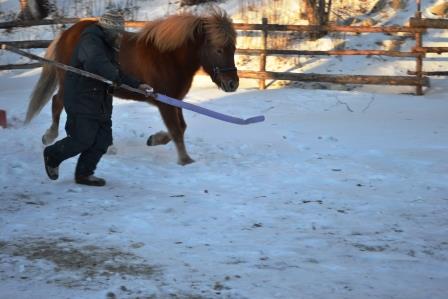
Home > Dispatches > Daily Dispatches 2017 >Daily Dispatch #228
August 21, 2017: Another Piece of the Puzzle
I thought for sure that I finally had all the pieces of the puzzle in hand and know where on the board they are going. However, this evening I realized that I do not. This is probably a much-needed feeling. It is very humbling. Humility is good – it keeps us from swaggering, which is probably hard on the hips. Well, first of all, I do have the board, and what a board it is. The Playground of Higher Learning is taking shape. Today, Pete and I finished building the shanty – I am going to call it this because when I was a kid, we used to go and hang out in this small building and do crafts and play games. And it was called the shanty. |
|
| Now, the pieces of the puzzle – Horse and Human body awareness -- Centered Riding, Agility/Obstacle work, and Human body awareness – Bones for Life/Feldenkrais training. These are the ones in-hand. Now add to this Intrinzen work. It’s big. It really is the missing link. It is the connector. Tonight I started taking an ongoing online course – Project Proprius. I am one of many doing this. I watched two wonderful videos that provided some of the theory behind the practice. I am going to watch these videos again tomorrow. I hope tomorrow, later in the day to see my horses anew. Kathy Sierra, who works with Steiner and has Icelandic horses, narrated the videos. Early on, she impressed upon us that agile means ready. And in order to be ready, the horse must have its weight evenly distributed between front and rear. A big problem is that horses often have too much weight on the forehand. Cathy showed photos of horses and used lines to illustrate the shape of horses’ backs, asking what do these shapes say? Well, the shapes said that extension with kinks painful, bad, flexion good. Furthermore, when the horse moves, the base of the neck must lift. Base of the neck down, bad. When the base of the neck is down, the horse throws his or her head up to counterbalance. I could see this in the demonstration horse, one that has had no Intrinzen training. In the videos and photos Steiner (the other half of the team) was working in unison with the horse. His posture was mimicking that of the horse, and the horse’s posture was mimicking his. The two were mirroring one another. Now, he does use a clicker and treats, but this does not fully explain why he has such an apparent good rapport with the horses he is working with. I think it’s that the horses are doing what they are doing because it’s both fun and in the spirit of play. Now, the question is, how can I do the same with my horses? The answer is, I am going to have to approach this with the thought that yes, we are out to have a good time, and in the process draw upon my own above-mentioned related training. |
|
